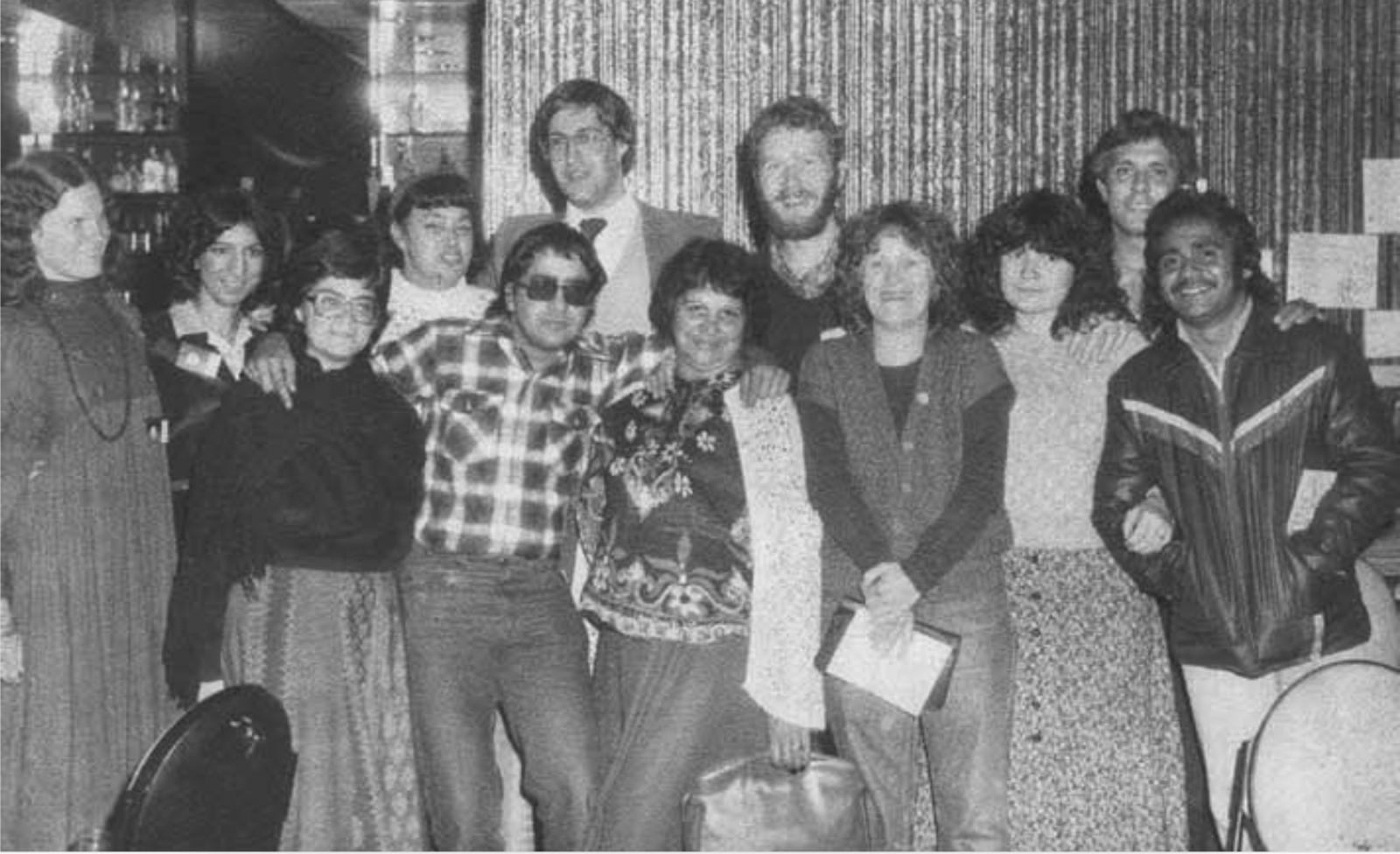VACCA emerged from a long and determined Aboriginal Civil Rights movement in Victoria.
The premise of the organisation was and still is that Aboriginal people have the right to the care and custody of their own kids, raised in Community and Culture.
As VACCA’s founder Auntie Mollie Dyer said in 1977:
Because of the chain of historical events which has led to the fragmentation of our Aboriginal families of today, it is up to each and every one of us to do all we can together to ensure that this situation is halted and reversed...
-
VACCA was created in the 1970s out of the Victorian Aboriginal community’s concern that many of their children were being removed from their families and placed, unsuccessfully, with non-Aboriginal carers. Many ended up in the justice system. Indeed, until 1977, a VACCA memo records that 90% of Aboriginal children place in non-Aboriginal foster care and adoption were ultimately returned to the care of the State and institutionalised.
In early 1976, at Australia’s First National Adoption Conference, Aboriginal people had one of their first platforms to speak about this issue. Aunty Mollie Dyer, the founder of VACCA, talked about the cultural and genealogical confusion of the Stolen Generations and the need to show caution before placing Aboriginal children in white foster families. She advocated starting an Aboriginal run agency to support children and families, and received unanimous support.
Following the conference, the Victorian Aboriginal Legal Service secured government funding for Aunty Mollie to take a study tour to the United States. There, she learned about models to reduce the rate of child removal within Native American communities. Aunty Mollie then returned to Australia to establish VACCA late in 1976.
VACCA started at its office in Melbourne’s Fitzroy with 5.5 staff, a case load of 205 clients, one typewriter and a budget of $40,000. VACCA received its first funding from the Federal Department of Social Security’s Office of Child Care in January 1978.
As it grew, VACCA moved into Fitzroy’s larger offices amidst the heart of Aboriginal activism and community services, with neighbours including the Aborigines Advancement League and Victorian Aboriginal Health Service. There was a strong sense of belonging, community and determination to achieve a better future. VACCA soon became a source of inspiration and support for other States and Territories in establishing similar agencies of their own.

-
In 1977, 4.5% of Victorian Aboriginal children were in out-of-home care. Within three years of VACCA operating, this number had reduced by 40 per cent.
VACCA started the ‘Ghubbariginals’, a support group for non-Aboriginal families who had adopted or fostered Aboriginal kids, and ran camps at Lake Tyers for the children.
Melbourne’s First Aboriginal Child Survival was held in April 1979. Following it, Mollie Dyer, Maxine Robbins, Stephen Unger and Graham Atkinson undertook a national tour to campaign for a legislated national network of Aboriginal childcare agencies. The Secretariat of National Aboriginal and Islander Child Care (SNAICC) was born in 1981.
Advocacy and leadership shown by VACCA has resulted in significant policy and legislation reform. In 1979 the Victorian Social Welfare Department adopted the principle that the removal of an Aboriginal child from his/her family or community environment should be a last resort.
The Aboriginal Child Placement Principle was then incorporated into the Victorian Adoption Act of 1984 and then the Children and Young Persons Act 1989, following the Carney Review. VACCA secured the state government’s agreement that it be consulted in all welfare-related decisions affecting Aboriginal children.
VACCA was a major contributor to the Victorian Children Youth and Families Act (2005). Section 12 recognises the right of Aboriginal people to self-determination and section 18 allows for ‘Aboriginal Guardianship’. In other words, for Aboriginal agencies to make decisions about the protection of Aboriginal children.
VACCA has continued to foster relationships and learn from international examples in Aboriginal child and family welfare, particularly from the indigenous people of Canada and America.
-
Aunty Muriel Bamblett, a Yorta Yorta and Dja Dja Wurrung woman, became the CEO of VACCA in 1999, and continues in the position today. Since then VACCA has grown immensely, as has its influence.
VACCA has become the lead Aboriginal child and family organisation in Victoria, with almost 500 staff, 51% of whom identify as Aboriginal. It has six offices located across the state, and over 70 programs assisting thousands of people each year. As such, it is the largest organisation of its kind in Australia and one of Victoria’s biggest Aboriginal employers. It also trains organisations on how to work for Aboriginal people, and remains a strong advocate for their rights.
Despite dealing with difficult challenges, VACCA has great hope for the future. The next generation of proud, strong, Aboriginal young people is coming up connected to Community and Culture, and amidst negotiations on self-determination and treaty. As Aunty Muriel says,
After all these years, I am now more steadfast in my view than ever before that the wellbeing and safety of our children is to be with their families and communities. Surely the fact that 80% of our children are (now) being raised in their families and doing well attests to this.
CORRECTION 03/04/2020: This page previously stated that Muriel Bamblett was VACCA's first CEO. This is incorrect and we apologise for any offence or confusion this may have caused. VACCA acknowledges the immense contribution that all of our Program Managers and CEOs have made to the development of our organisation.
.jpg)